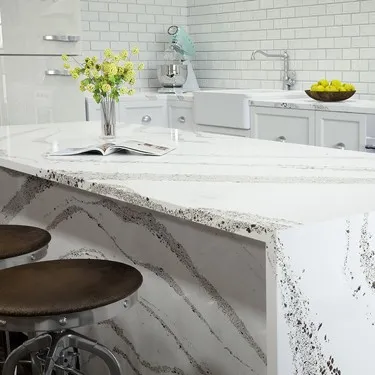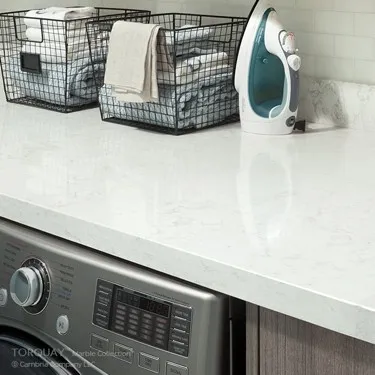Creating a Budget
The steps to setting a budget for your next kitchen or bathroom remodeling project are simple and straightforward - but it can be a harder task thank you’d think, especially if it’s your first time!
We’re here to lay out the basics for you to get started. Then, once you’ve got a rough idea, you can talk to one of our design experts and even set up special financingdepending on your needs!
The Big Questions
Start by asking yourself two important questions:
- How much do you want?
- How much can you actually afford?
Decide how much of your financial resources you’re realistically willing to spend on a renovation project. Then, stick to it! Plan your purchases in advance so you can be sure you won’t be going over-budget by the end.
Do your market research and make sure you have a good sense of your options and what the average cost of certain aspects are generally.
To help you determine just how much of your budget should be devoted to each piece of your renovation, we’ve created these helpful tables below based on recommendations from the National Kitchen & Bath Association (NKBA). You should also set aside 20 - 30% of your budget to account for any unexpected costs that may come up.
How to spend your renovation budget | |||
Kitchen Renovations | Bathroom Renovations | ||
| Cabinetry & Hardware | 29% | Labor | 20% |
| Labor | 17% | Cabinetry & Hardware | 16% |
| Appliances & Ventilation | 14% | Fixtures | 15% |
| Countertops | 10% | Faucets & Plumbing | 14% |
| Flooring | 7% | Flooring | 9% |
| Walls & Ceilings | 5% | Countertops | 7% |
| Lighting | 5% | Lighting & Ventilation | 5% |
| Faucets & Plumbing | 4% | Walls & Ceilings | 5% |
| Doors & Windows | 4% | Doors & Windows | 4% |
| Design Fees | 4% | Design Fees | 4% |
| Other Fees | 1% | Other Fees | 4% |
Determine how you’ll pay
Whether you opt for a loan, taking out a line of credit, refinancing, or another route, make sure your finances are squared away before you make your first purchase.
At House of Carpets, we offer special financing opportunities through our partnership with Synchrony.
A tax deductible home equity loan is another popular payment route. Some customers opt to pay in cash, but keep in mind that it may be in your best interest to borrow money at a low interest rate rather than pull from a high-return investment account.
Do your math, and you’ll make the right choice! We’re always happy to answer any financial questions as best we can.
Hire a professional & set expectations
If you choose all of your materials before the project begins, you’ll be able to set realistic expectations when it comes time to hire a professional designer or contractor to complete the renovation.
Some averages remodel costs may look something like this:
Light Refresh
- $200 - $5,000 for a bathroom
- $1,500 - $10,000 for a kitchen
This type of remodel usually involves basic updates to cabinetry, surfaces, sinks, faucets & fixtures, lighting, window treatments or even just installation services.
Minor Remodel
- $5,000 - $15,000 for a bathroom
- $10,000 - $25,000 for a kitchen
This type of remodel may include brand new budget appliances or sinks, moving fixtures and adding new utilities, new cabinets or walls, and replacement flooring.
Major Remodel
- $15,000+ for a bathroom
- $25,000+ for a kitchen
More ambitious remodels often include premium and designer products, new construction, high-end flooring, new windows or skylights, redone utility connections, new layouts for cabinets, new doorways, and more.
Do-it-yourself (DIY) projects
If you are experienced and confident in your own abilities, you may be considering a do-it-yourself project.
Keep in mind that poorly renovated spaces, especially kitchens and bathrooms where plumbing and electrical functionality are crucial, can really impact the safety and value of your home in a negative way, becoming expensive fixes down the line.
To avoid these issues and ensure that your work will pass any required inspections, ask yourself the following:
- Are you aware of the required budget, materials, and building codes for the full scope of the job?
- Do you have the knowledge, experience and tools needed?
- Do you have adequate time to complete it outside of your day job and other duties?
- Do you have the required permits, licensing and inspections?
Determine if your home will be livable during the remodel
Depending on the size and scope of your project, you and your family may not be comfortable staying in your home, especially if critical parts of your bathroom or kitchen are unusable. If you’re able to set up a temporary kitchen in another part of your home or have access to alternative water sources for cooking and bathing, you may be fine. Otherwise, you should weigh the costs and benefits of living elsewhere during the process.



